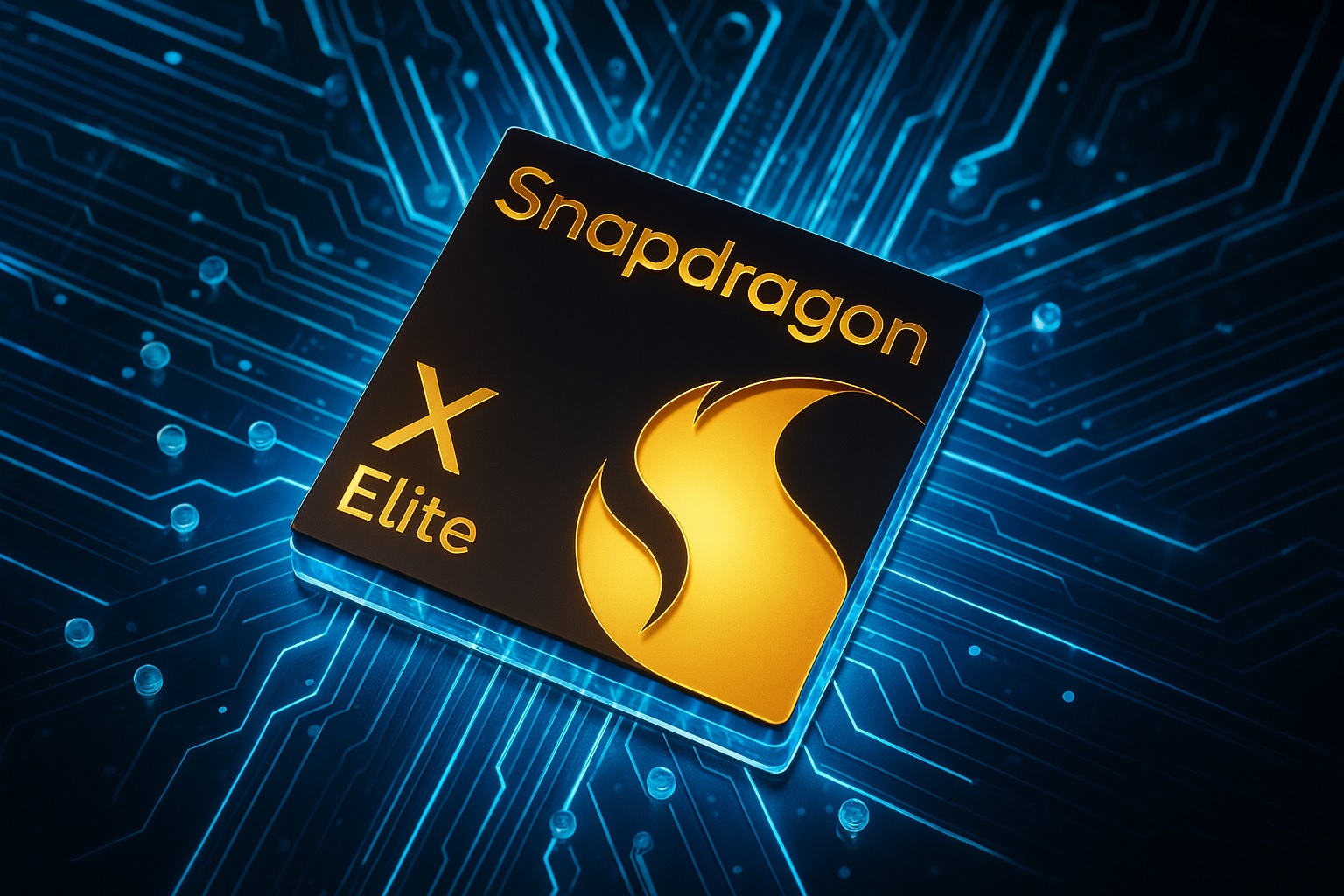- New findings suggest Qualcomm has added Android 16 support for its Snapdragon X laptop chips, hinting at early groundwork for Android-powered PCs. [1]
- References to “Purwa” (an internal codename tied to first‑gen Snapdragon X parts such as SC8380) appear in code lists, strengthening the connection to Qualcomm’s current PC silicon. [2]
- Google and Qualcomm previously said desktop‑class Android on PCs is coming “next year,” though today’s leak doesn’t equal product launches or release dates. [3]
- A polished, built‑in desktop mode remains Android’s biggest missing piece; Android 16’s first iterations are promising but still rough in places. [4]
What happened today
Multiple outlets spotted evidence that Qualcomm is preparing Android 16 for its Snapdragon X PC platform. 9to5Google reports that internal lists show Snapdragon X chipsets—including X Elite—appearing in Android 16’s private code, while Android Authority and Android Headlines detail similar findings and emphasize that this is early engineering work rather than a product announcement. [5]
Screenshots referenced by these reports point to “Purwa,” a codename used across Snapdragon X family development. Independent public documentation from the Windows‑on‑ARM community maps Qualcomm’s SC8380/X1 parts and confirms Purwa as a Snapdragon X variant, bolstering the linkage between the leak and Qualcomm’s current notebook silicon. [6]
How we got here: Google + Qualcomm want Android on PCs
At Snapdragon Summit 2025, Google executives spoke about moving to a common foundation that brings Android to PCs, and Qualcomm’s CEO publicly called Google’s desktop Android effort “incredible.” The companies framed 2026‑era machines running a new PC‑class Android experience as the next step for the ecosystem. Today’s code sightings fit that trajectory, even if they don’t confirm specific devices. [7]
The silicon that could power early Android PCs
The code mentions align with first‑generation Snapdragon X parts (e.g., SC8380 “Purwa”), the chips widely used in Windows on Arm laptops this year. Qualcomm has already previewed X2 Elite for 2026 Windows PCs with big performance and efficiency gains, but even 9to5Google notes it’s unclear whether second‑gen silicon will power the first Android PCs. In other words, early Android PCs may ship on today’s X‑series rather than wait for X2. [8]
The software reality check: desktop mode still isn’t “done”
Android 16 brings major progress toward a desktop‑style interface—windowed apps, taskbar, and better external display behavior—but it’s not fully ready. Android Authority warns the mode feels “half‑baked” today, and 9to5Google’s hands‑on likewise found rough edges (low scaling, limited system UI controls) in current builds. Google itself has been exposing developers to the evolving connected displays/desktop experience through recent previews. OEMs can prototype now, but mass‑market polish still needs time. [9]
Complicating matters, some Android‑16 power‑user features aren’t universal across chips. For example, Android’s Linux Terminal support (which enables desktop Linux apps) doesn’t currently work on Qualcomm’s latest phone SoCs—an illustration of how platform‑feature parity can lag on certain silicon. That’s not a direct blocker for Snapdragon X laptops, but it shows why end‑to‑end software readiness is crucial. [10]
Why this matters
- PC choice & value: If Android PCs land, buyers could see thin‑and‑light laptops with excellent battery life, instant‑on behavior, and deep Google services integration—an alternative to Windows and ChromeOS machines. [11]
- Developer upside: A unified Android desktop could simplify large‑screen app strategy across phones, tablets, foldables, and PCs, especially as Google merges frameworks and tooling. [12]
- Competition: Qualcomm’s X‑series is already reshaping the Windows laptop conversation; bringing Android to the same hardware could accelerate ARM’s momentum in mainstream computing. [13]
What’s still unknown
- Confirmations & timelines: Qualcomm hasn’t announced Android‑powered laptops or OEM partners. Code in a repo signals validation work, not shipping products. Expect slow, deliberate updates rather than surprise launches. [14]
- Which chips ship first: Today’s clues point to first‑gen Snapdragon X (SC8380/Purwa). Whether X2 Elite joins early Android PCs is an open question. [15]
- UX maturity: Google’s desktop mode needs further refinement before it can replace Windows‑style workflows in education, SMB, or enterprise. [16]
What to watch next
- AOSP & preview branches: More Android 16/17 commits tied to Snapdragon X (and possibly X2) will be the first visible breadcrumbs. [17]
- Developer tooling: Google’s guidance for desktop‑class windowing, input, and multi‑display will signal how quickly the UI will harden. [18]
- OEM prototypes: Expect reference designs or 2‑in‑1/tablet‑first devices to appear before clamshell laptops as OEMs test the waters. [19]
Source roundup (Nov 11–12, 2025)
- 9to5Google first flagged Snapdragon X Elite references in Android 16’s private code lists for Android PCs. [20]
- Android Authority analyzed the same findings and cautioned that desktop mode remains immature. [21]
- Android Headlines echoed the leak and contextualized Google/Qualcomm’s PC‑class Android plans. [22]
- WOA Project GitHub documentation links SC8380/Purwa directly to Snapdragon X reference designs. [23]
- Tom’s Hardware detailed Snapdragon X2 Elite (for 2026 Windows PCs), which may not be in the first wave of Android PCs. [24]
- Hands‑on desktop mode reports show the current Android 16 experience is still evolving.
Bottom line
Today’s leak doesn’t mean Android laptops are imminent, but it does show Qualcomm and Google are steadily aligning the pieces—chips, code, and UI—for an Android PC push. As of Nov 12, 2025, the most realistic near‑term expectation is developer and OEM prototyping on first‑gen Snapdragon X hardware while Google continues to harden desktop mode. The moment you see a polished desktop shell in a public Android build, you’ll know Android PCs are getting close. [25]
Reporting based on: 9to5Google, Android Authority, Android Headlines, WOA Project (GitHub), Tom’s Hardware, and Google developer materials. [26]
References
1. 9to5google.com, 2. www.androidauthority.com, 3. 9to5google.com, 4. www.androidauthority.com, 5. 9to5google.com, 6. github.com, 7. 9to5google.com, 8. 9to5google.com, 9. www.androidauthority.com, 10. www.androidauthority.com, 11. 9to5google.com, 12. 9to5google.com, 13. www.tomshardware.com, 14. www.androidauthority.com, 15. 9to5google.com, 16. www.androidauthority.com, 17. 9to5google.com, 18. android-developers.googleblog.com, 19. www.androidauthority.com, 20. 9to5google.com, 21. www.androidauthority.com, 22. www.androidheadlines.com, 23. github.com, 24. www.tomshardware.com, 25. 9to5google.com, 26. 9to5google.com
